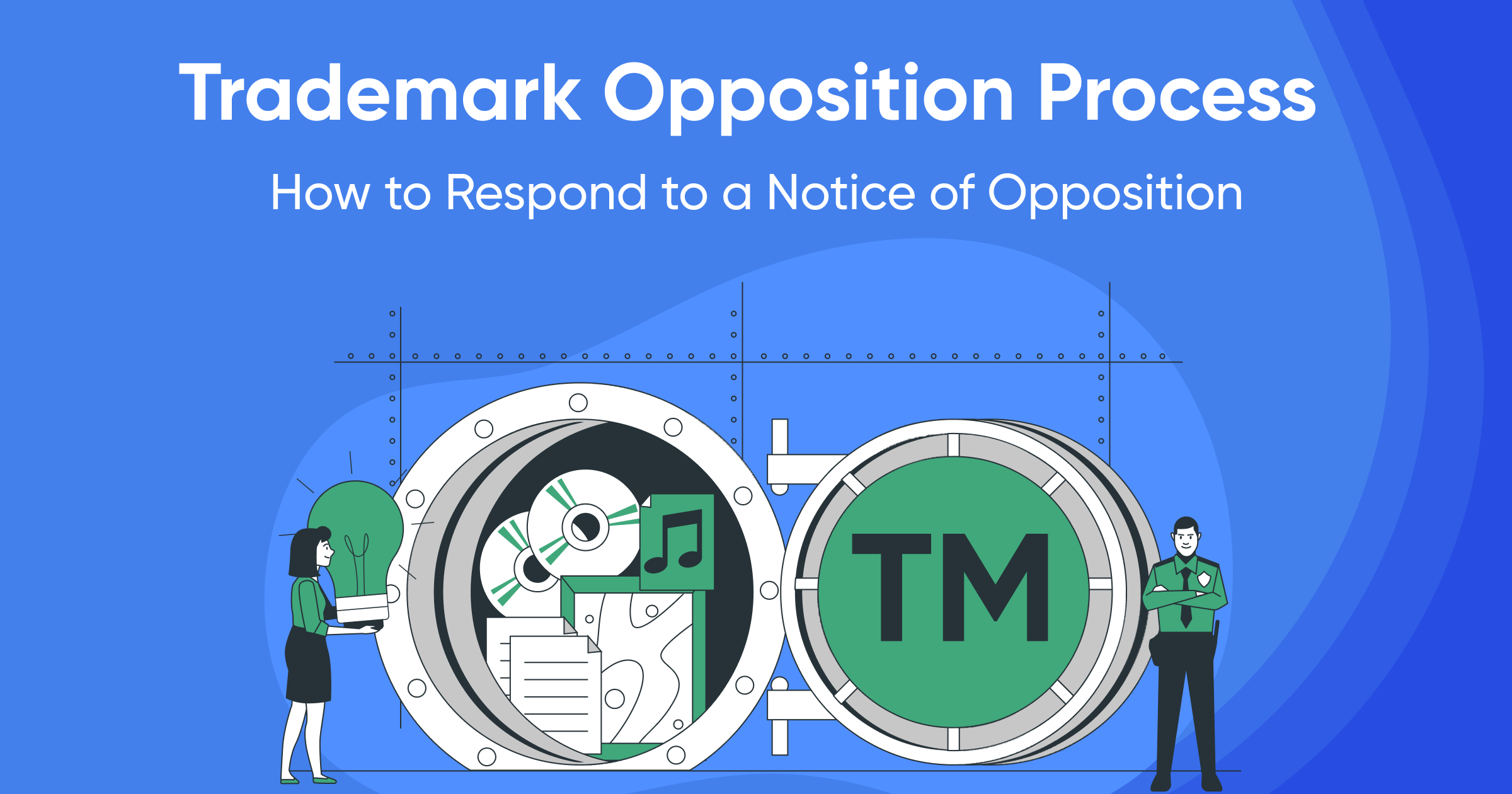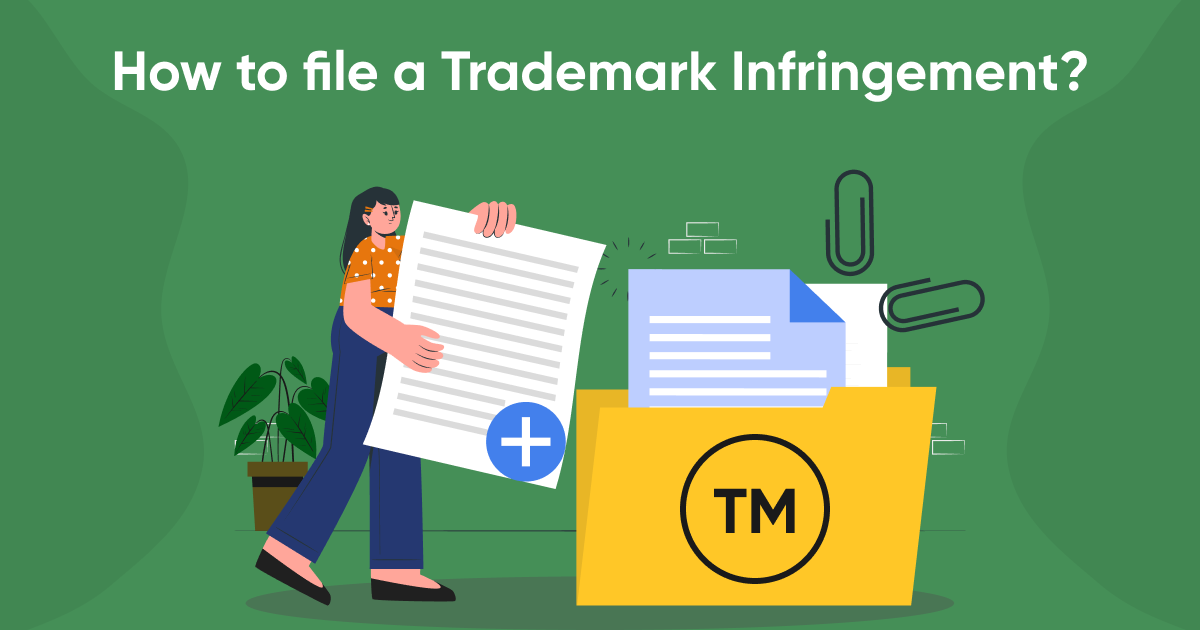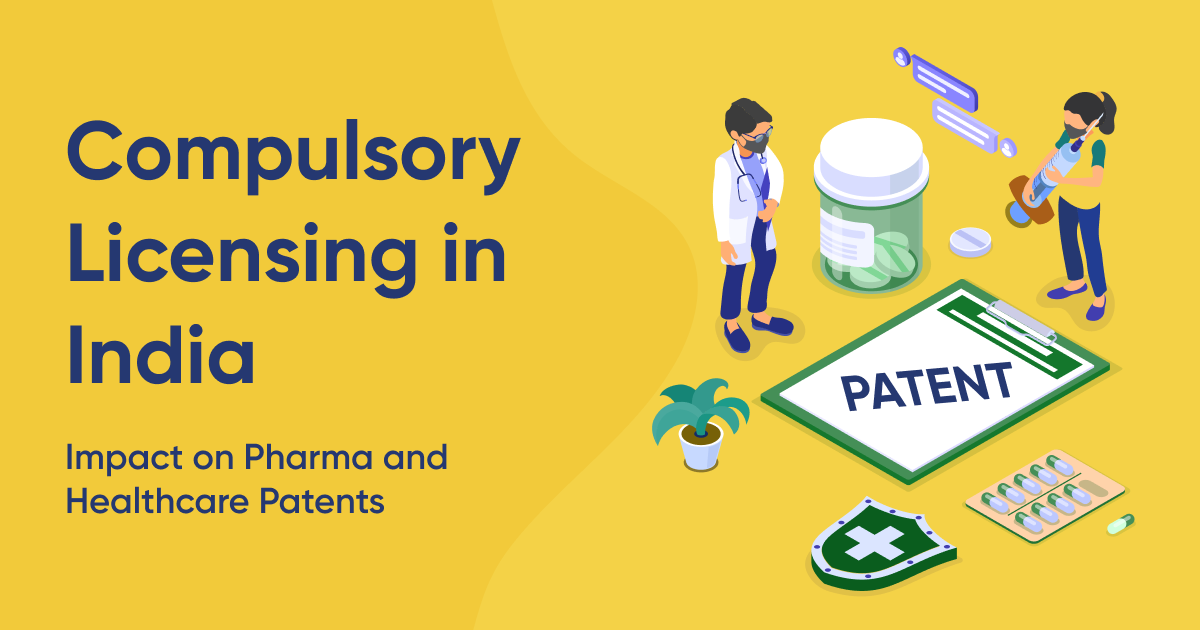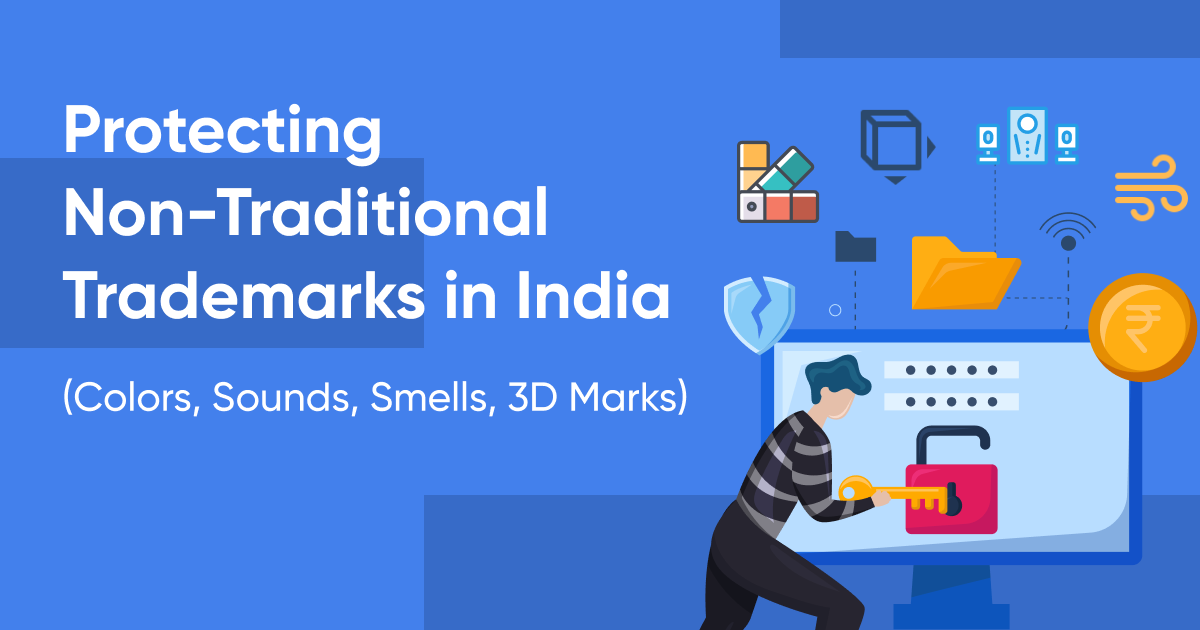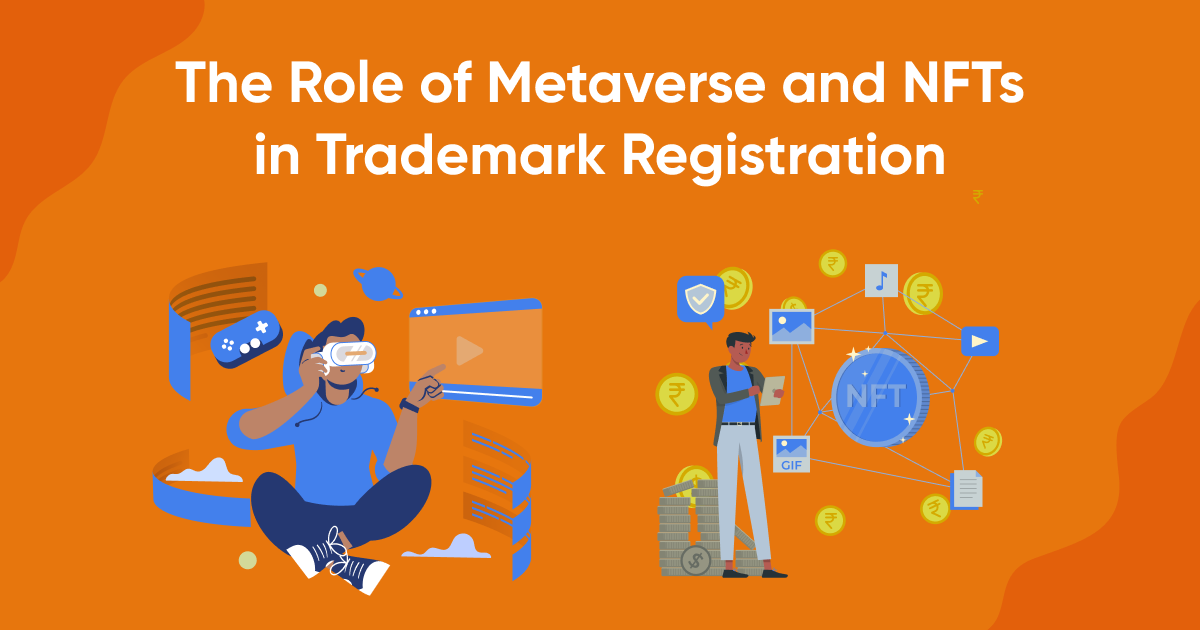So you've filed your trademark application, dreamt of brand domination, and then...BAM! A Notice of Opposition lands on your desk. Don't panic! Receiving an opposition is a normal part of the trademark process, and a well-crafted response can strengthen your trademark position.
This blog will guide you through the battlefield of trademark opposition, specifically focusing on how to respond to that Notice.
Why Do Oppositions Happen?
Imagine trademarks as flags planted on brand territory. Oppositions arise when someone believes your flag infringes on their existing claim. There are various reasons for opposition:
- Similar Trademarks: The opposing party might have a similar trademark, causing confusion among consumers.
- Prior Rights: They might claim prior use of a similar mark, giving them common law rights.
- Generic Terms: They might argue your trademark is a generic term, not eligible for exclusive rights (think "aspirin" for headaches).
- Damage to Reputation: They might believe your mark could damage their brand reputation.
Understanding the Notice
The Notice of Opposition details the grounds for opposition. Read it carefully, dissecting each argument. Identify the specific trademark law sections they cite (e.g., likelihood of confusion). This will be the foundation of your counter-response.
Building Your Defense: Crafting a Counterstatement
Here's where you counterpunch the opposition's arguments. Your counterstatement, typically filed within 60 days of receiving the Notice, should address each point raised by the opposer.
1. Strengths of Your Trademark
- Distinctiveness: Demonstrate the distinctiveness of your trademark through acquired distinctiveness. Show evidence of how your brand has developed a unique identity separate from the generic term (think "Kleenex" for tissues).
- Secondary Meaning Surveys: Consider consumer surveys to establish that your mark has acquired a secondary meaning in the minds of consumers, associating it with your brand (e.g., "Apple" for computers).
- Searches and Clearances: Highlight any trademark searches and clearances conducted before filing to show good faith.
2. Addressing Likelihood of Confusion
- Strength of Opposer's Mark: If the opposer's mark is weak (descriptive or generic), argue that consumers are less likely to be confused by a similar mark.
- Differences in Goods/Services: Demonstrate that your goods/services are different from the opposer's, reducing confusion (think "Apple" for computers vs. "Apple" for orchards).
- Trade Channels: Show you operate in different channels, further reducing consumer confusion (think "Delta" airlines vs. "Delta" dental floss).
3. Addressing Prior Use
If the opposer claims prior use, gather evidence to counter it. This could include:
- Evidence of your earlier use of the mark through sales records, marketing materials, or website archives.
- Lack of evidence of the opposer's use in relevant channels.
4. Addressing Damage to Reputation
If the opposer argues your mark could damage their reputation, demonstrate the distinctiveness of your mark and the lack of association with the opposer's brand.
Evidence is King
A strong counterstatement is backed by solid evidence. Gather documents like:
- Sales figures demonstrating brand use
- Marketing materials showcasing the trademark
- Website records with consistent use of the mark
- Affidavits from customers familiar with your brand
Considering Legal Muscle
Trademark law can be complex. Consulting a trademark attorney experienced in opposition proceedings can be invaluable. They can guide you through the legalese, craft a persuasive counterstatement, and represent you before the Trademark Trial and Appeal Board (TTAB) if necessary.
The Road Ahead
Responding to a Notice of Opposition can be daunting, but with a well-prepared counterstatement and strong evidence, you can effectively defend your trademark. Remember, deadlines are crucial, so act promptly. Consider seeking legal guidance for a robust defense. By strategically responding to the opposition, you can ensure your brand's flag continues to fly high.
Beyond the Counterstatement: What to Expect After Responding
Having submitted your counterstatement, the opposition process unfolds like a game of chess. Here's what to expect in the following stages:
Discovery:
- This phase allows both parties to gather additional evidence to support their claims. This might involve requesting documents, witness statements, or depositions.
Evidence Exchange:
- All gathered evidence is exchanged between the parties and the TTAB. This ensures transparency and allows each side to prepare counter-arguments.
Briefs:
- Both sides submit legal briefs to the TTAB, summarizing their arguments and citing relevant legal precedent. This strengthens the case before the board.
Oral Hearing (Optional):
- In some cases, the TTAB might schedule an oral hearing where each party can present their arguments verbally. This allows for a more dynamic presentation and addressing any questions raised by the board.
TTAB Decision:
- After reviewing the evidence and briefs, the TTAB issues a written decision. This decision will either sustain the opposition (meaning your trademark application is rejected), partially sustain it (with limitations on your trademark), or cancel the opposition (allowing your trademark registration to proceed).
Appeals:
- If you disagree with the TTAB's decision, you have the right to appeal to the Federal Circuit Court of Appeals. This is a complex legal process best undertaken with the help of an experienced trademark attorney.
Settlement Discussions:
- Throughout the process, settlement discussions can occur. Reaching an agreement with the opposing party can save time and resources. An attorney can mediate these discussions to ensure a favorable outcome.
Beyond the Win or Loss
The opposition process, even if successful in defending your trademark, can be time-consuming and expensive. Here are some takeaways to consider:
- Proactive Trademark Protection: Conducting thorough trademark searches before filing your application can help avoid oppositions in the first place.
- Maintaining Strong Documentation: Keep detailed records of your trademark use, including marketing materials, sales figures, and website archives. This strengthens your case in case of opposition.
- Building Brand Awareness: Investing in brand-building activities helps establish the distinctiveness of your trademark and reduces the risk of confusion with similar marks.
Conclusion
Trademark opposition, though challenging, can be a valuable learning experience. By understanding the process, crafting a strong counterstatement, and potentially seeking legal guidance, you can effectively defend your brand and ensure its continued growth. Remember, a protected trademark is a valuable asset, safeguarding your brand identity and fostering consumer trust. So, stay vigilant, strategize effectively, and emerge victorious from the opposition battlefield.
For further resources and information on trademark protection in India, consider visiting Trademarkia - a comprehensive platform dedicated to intellectual property. With their insights, you can navigate the legal landscape with greater confidence.
Frequently Asked Questions
Do I have to respond to a Notice of Opposition?
Yes, failing to respond within the deadline (usually 60 days) can lead to your trademark application being abandoned.
Can I respond to a Notice of Opposition without a lawyer?
While you can respond yourself, trademark law can be complex. Consulting a trademark attorney experienced in opposition proceedings is highly recommended. They can guide you through the process, craft a persuasive counterstatement, and represent you before the TTAB if necessary.
What kind of evidence should I gather for my counterstatement?
Strong evidence is crucial. Gather documents like sales figures demonstrating brand use, marketing materials showcasing the trademark, website records with consistent use of the mark, and affidavits from customers familiar with your brand.
What happens after I submit my counterstatement?
The process unfolds in stages like discovery, evidence exchange, briefs submission, and a potential oral hearing. Finally, the TTAB issues a written decision on sustaining or canceling the opposition.
